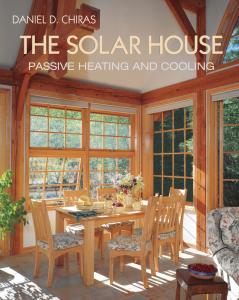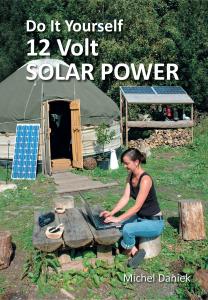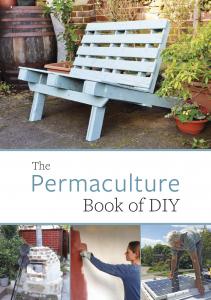 An increasing number of engineers, architects, landscapers, chemists and various other professionals from every walk of life are beginning to see real solutions to our most pressing “environmental” problems (or what I like to call “massive life support system that allows us to eat, breathe and live” problems).
An increasing number of engineers, architects, landscapers, chemists and various other professionals from every walk of life are beginning to see real solutions to our most pressing “environmental” problems (or what I like to call “massive life support system that allows us to eat, breathe and live” problems).
Solutions cannot come from just reducing, reusing, and recycling, however. Equally important is rethinking the foundation that these well-known three Rs are based on. Ecological engineer and permaculture landscape designer Bill Mollison summed it up nicely when he said, “Though the problems of the world are increasingly complex, the solutions remain embarrassingly simple.”
As is noted by revolutionary architect and designer William McDonough and chemist and co-author Michael Braungart in their book, Cradle to Cradle: Remaking the Way We Make Things, we are accustomed to thinking of industry and the environment as being at odds with one another. Since traditional methods of resource extraction, manufacture and disposal are simply destructive, this is no surprise.
McDonough and other designers are now challenging us to rethink this view, however. They believe both industry and environmentalism must be totally rethought and seen to be connected, as they are in fact in reality.
McDonough asks, “What if humans designed products and systems that celebrate an abundance of human creativity, culture, and productivity? That are so intelligent and safe, our species leaves an ecological footprint to delight in, not lament?”
Many brilliant designers have already designed a plethora of products, buildings, and materials that do indeed fit the above criteria. McDonough and Braungart group the building blocks of such assets in a truly sustainable society into two categories: technical nutrients and biological nutrients.
Technical nutrients are non-toxic materials that can be recycled indefinitely. To do this we need to design our products to be easily separated, in order to prevent cross-material contamination and “downcycling”. Biological nutrients, of course, are totally biodegradable and also non-toxic, and enrich the environment by creating healthy soil when they are “disposed” of.
Here are a few examples of products that fit these criteria or are being developed to do so:
Paper
The Cradle to Cradle book itself is a good example of an alternative to paper, though its writers acknowledge that it’s only a start. The book is made out of a type of plastic polymer that is infinitely recyclable, and highly durable. Instead of creating books anew every time with valuable new material (or what I like to call “beautiful oxygen making machines”), it is possible to create a book from an old book, or a deck of cards, or whatever else is made with the pure “technical nutrient”. Recycled paper’s quality degrades quickly into unusable shorter fibers, which then become part of our roads, or are burned to power the paper mill: a very efficient form of destruction I would say.
Cloth and Fabric
This is a fairly easy one, as there are a number of natural ways to create cloth that are much better than using toxic synthetics such as polyester, which contains antimony, a carcinogen toxic to the heart, lungs, liver and skin. Certain natural fibers are also more effective and useful than others, so we should naturally gear our production towards these. For example, bamboo is one of the best choices for fabric in some areas, since it does not require pesticide, is extremely fast growing, and does not require chemicals to process.
A Swiss company, Rohner Textile, creates an upholstery fabric so safe one could literally eat it. The fabric will decompose naturally once its useful life is over, and the drinking water leaving the textile factory, after filtering through the cloth during production, is as clean as the water going into the factory.
Carpets
Completely non-toxic and biodegradable carpets have been developed by McDonough Braungart Design Chemistry (MBDC), a design firm founded by McDonough and Braungart in 1995. Given that most carpets contain toxic compounds, and since there is so much of the stuff around, this is of particular concern.
Flooring
Instead of using precious, slow growing trees as flooring, bamboo can provide an alternative that is just as beautiful, just as durable (or more so), and much more efficient. A number of companies have already developed safe, non-toxic alternatives to our formaldehyde-ridden, unsustainable wooden floors using bamboo and other materials.
Roofs
Green roofs, which may contain any number of plant species, including trees and shrubs, have many valuable benefits besides just looking beautiful. They reduce energy usage via their temperature moderating action, reduce or eliminate storm water runoff, provide valuable animal habitat, and can even be used to grow food.
Buildings
Totally self-heating, self-cooling, self-powering buildings are entirely feasible with today’s technology, and many have already been built (some cheaper than traditional buildings). Buildings that create soil, grow food, create oxygen, purify water and air, and use strictly clean energy.
Entire Cities
McDonough and his firm have been helping to design seven new communities in China (six cities and a village) using high ecological standards. One of the cities in question, for example, will barely have any ecological footprint. Literally. The plan is to actually raise existing land and construct the buildings underneath it, creating an instant green roof.
Besides the above examples, MBDC itself has helped to design many other products and materials that fit what they call the “cradle-to-cradle” principle.
The old “cradle-to-grave” philosophy, note McDonough and Braungart in their book, emerged in an era when natural resources seemed unlimited. We now know better than this.
Given that resources are not infinite, and many are quickly running out, it is clear that our present system of design must change. The old paradigm where industry and environment are at odds with one another will not serve anyone in the long run.
Although each of us individually cannot be expected to redesign the way industry operates, we can become more aware of the products we buy, use and help to make, and change our own perspectives of the world we live in. Instead of seeing a world of conflict and deficiency, we must realize the potential for a world of abundance.
Our goal, as McDonough puts it, should be “a delightfully diverse, safe, healthy and just world, with clean air, water, soil and power – economically, equitably, ecologically and elegantly enjoyed.”



